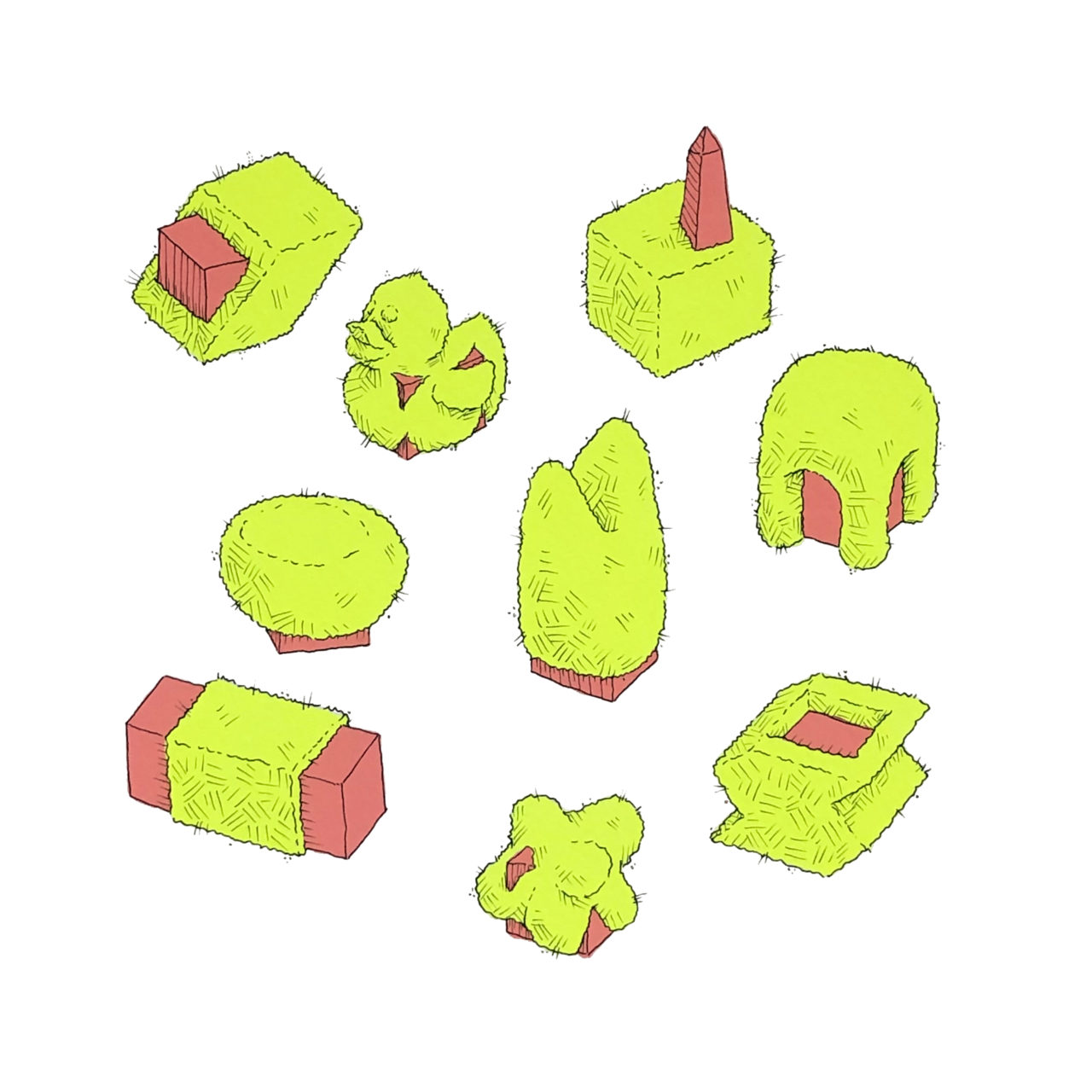Table of Contents
- Introduction
Most Plants Can Become Topiary, But Some Are Better Than Others
History: It All Began with the Romans...
Topiary Tango Tells Tales
Topiaries Mask Volumes
Which Limbers Up Architecture
Topiary Architecture Has Design Implications
Take These Two, for Example
Installation Views
Topiaries Mask Volumes
Topiary is volumetric; it can be used to wrap objects and obscure their original forms with new geometries. A cube surrounded by topiary can be disguised as a sphere or an obelisk; meanwhile a sphere and an obelisk can masquerade as two identical cubes. The shape of the original object is less important, as it can be changed and reconfigured. The object can be stretched, scaled, reoriented, simplified, or complexified; two objects can be combined into one, or one can give the illusion of being two. The object’s figure is independent from its topiary sheath.
Topiary can be sculpted and re-sculpted; the cube once-disguised as a sphere can be adjusted into a cone. The object’s bushy costume is infinitely reconstitutable into new styles.
Unlike green screens, which rely on an underlying surface to define their form, topiaries are structurally independent. A zig-zag figure straightened out with topiary would remain squiggly if draped in green-screens. Topiary is not a leafy aesthetic; its mass reconstructs compositions and influences space.
Static architecture becomes a soft, undulating, reactive body with a verdant veil. Topiary breathes new life into an otherwise calcified construction.

